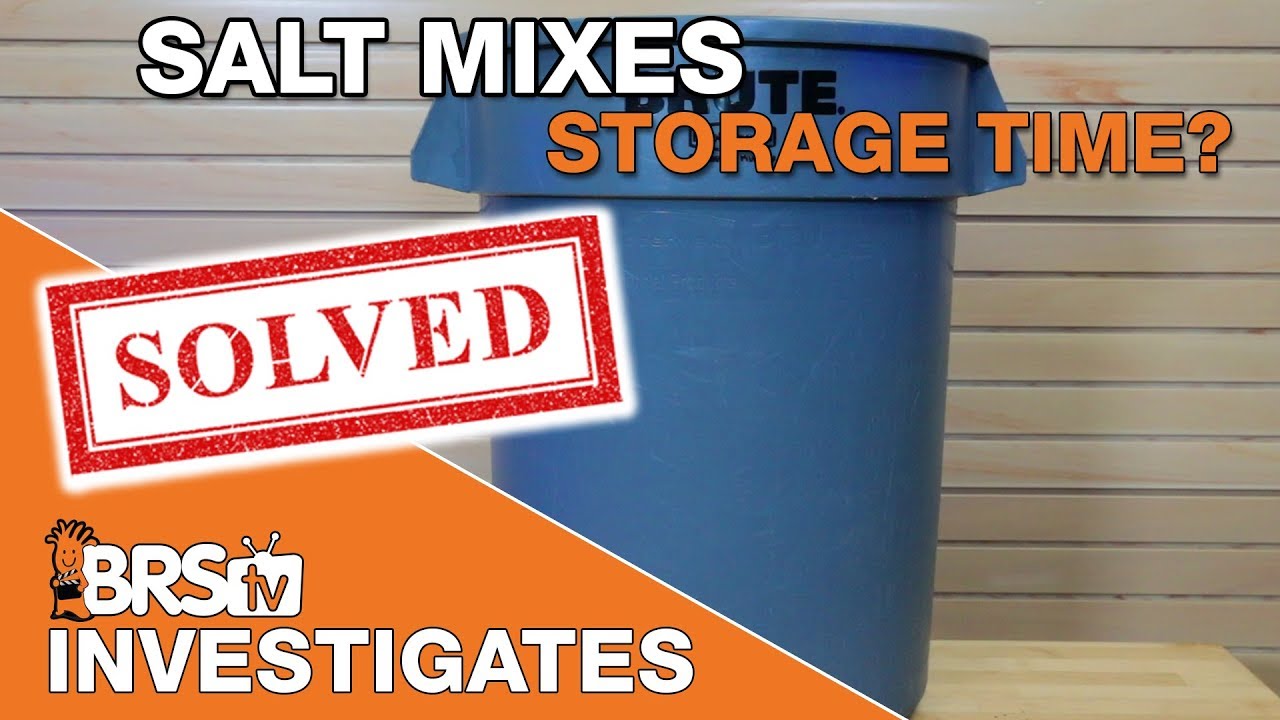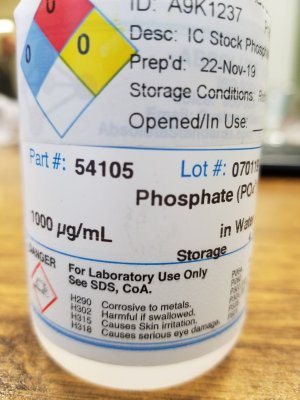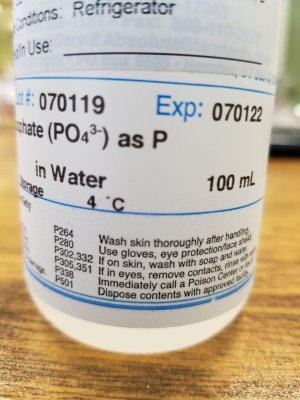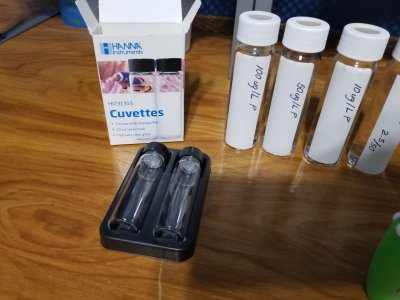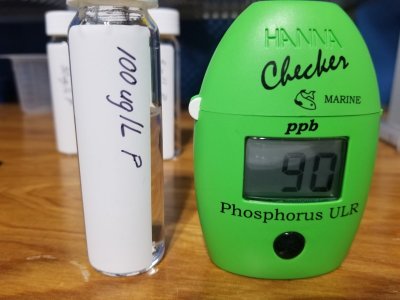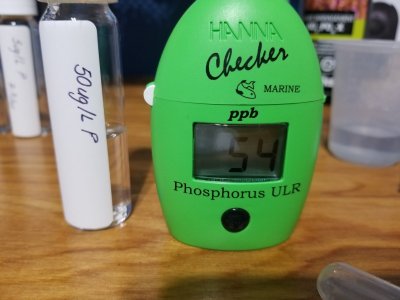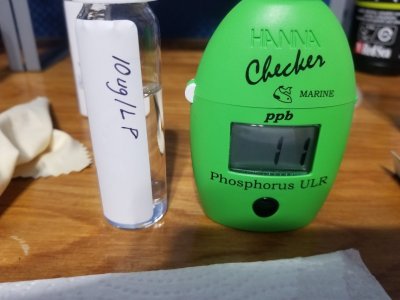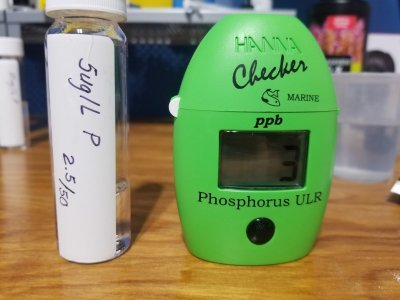- Joined
- Nov 30, 2018
- Messages
- 63
- Reaction score
- 41
The results of my testing are really disappointing. I would be nice if someone could do a similar study to confirm. Here it is
Hanna ULR Model HI 736 Validation Test
Quick background – Your Hanna can only see “free” phosphate. It is only free phosphate that creates the blue color which the meter measures. Your Hanna “prep process” with reagent HI376 is supposed to break down organic containing phosphorus compounds into free phosphate which the meter can “see”. I am not testing the Hanna prep process for breaking down organics. I am simply verifying the meters default calibration or its ability to quantitate “free” phosphate which is all that the meter knows. It knows nothing else but free phosphate.
I made several standards from two separate sources for my Hanna ULR Model HI 736. These are phosphate standards created from ACS grade 99.9+% sodium phosphate in clean reef crystals salt water at 1.025.
Solution A: 100 ug/L P (0.31 mg/L PO4) > Hanna Result > 85 ug/L (85% recovery)
2nd trial result > 67 ug/L ( 67% recovery)
Solution A1: 123 ug/L P > Hanna result 86 ug/L ( 70% recovery)
Solution B: 50 ug/L P (0.15 mg/L PO4) > Hanna Result 35 ug/L ( 70% recovery)
Solution C: 20 ug/L P ( 0.06 mg/L PO4) > Hanna Result 1 ug/L (5% recovery)
2nd trial 5 ug/L (25% recovery)
Solution D: 10 ug/L (0.03 mg/L PO4) > Hanna Result > 1 ug/L (10% recovery)
2nd Trial Result > 0 ug/L (0 % recovery)
.
Hanna ULR Model HI 736 Validation Test
Quick background – Your Hanna can only see “free” phosphate. It is only free phosphate that creates the blue color which the meter measures. Your Hanna “prep process” with reagent HI376 is supposed to break down organic containing phosphorus compounds into free phosphate which the meter can “see”. I am not testing the Hanna prep process for breaking down organics. I am simply verifying the meters default calibration or its ability to quantitate “free” phosphate which is all that the meter knows. It knows nothing else but free phosphate.
I made several standards from two separate sources for my Hanna ULR Model HI 736. These are phosphate standards created from ACS grade 99.9+% sodium phosphate in clean reef crystals salt water at 1.025.
Solution A: 100 ug/L P (0.31 mg/L PO4) > Hanna Result > 85 ug/L (85% recovery)
2nd trial result > 67 ug/L ( 67% recovery)
Solution A1: 123 ug/L P > Hanna result 86 ug/L ( 70% recovery)
Solution B: 50 ug/L P (0.15 mg/L PO4) > Hanna Result 35 ug/L ( 70% recovery)
Solution C: 20 ug/L P ( 0.06 mg/L PO4) > Hanna Result 1 ug/L (5% recovery)
2nd trial 5 ug/L (25% recovery)
Solution D: 10 ug/L (0.03 mg/L PO4) > Hanna Result > 1 ug/L (10% recovery)
2nd Trial Result > 0 ug/L (0 % recovery)
.







